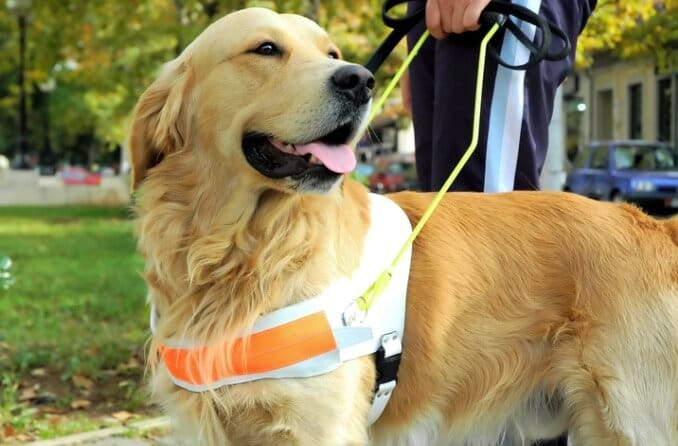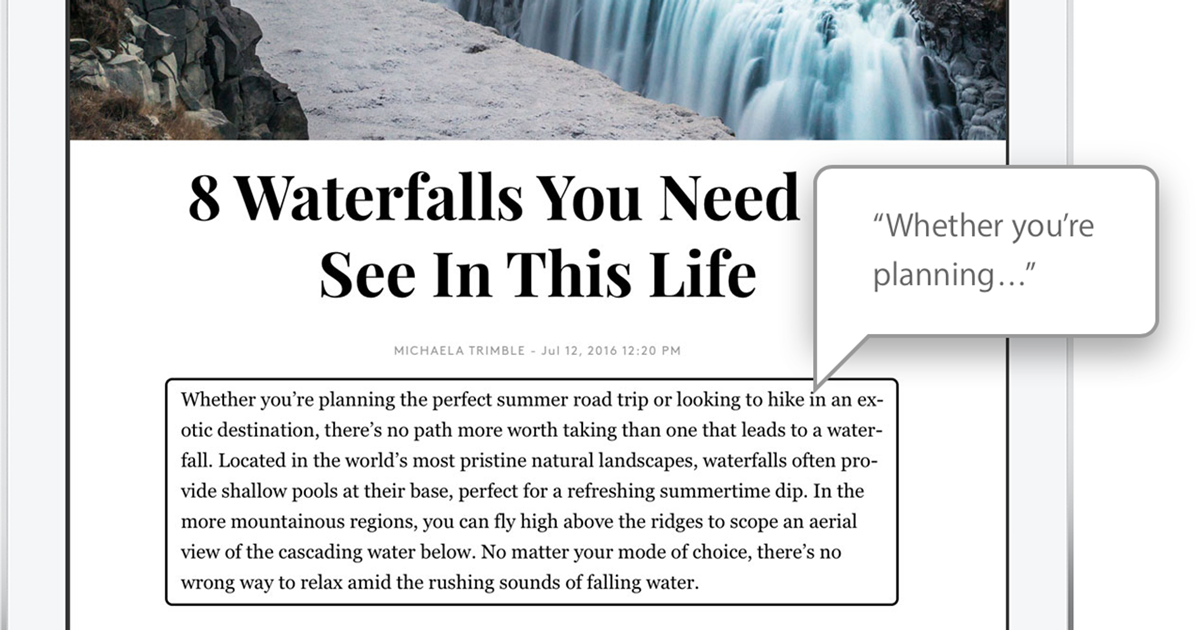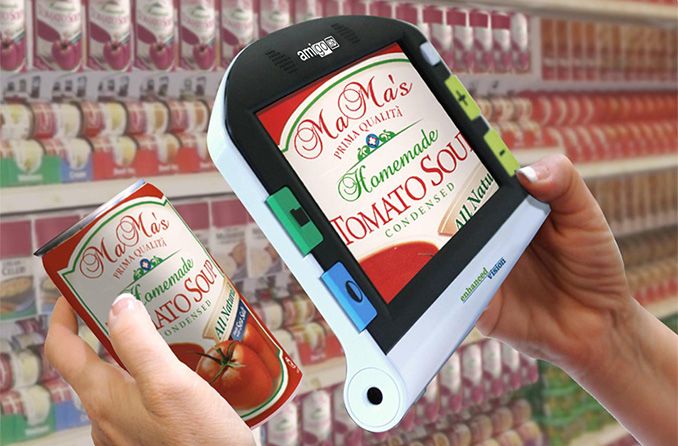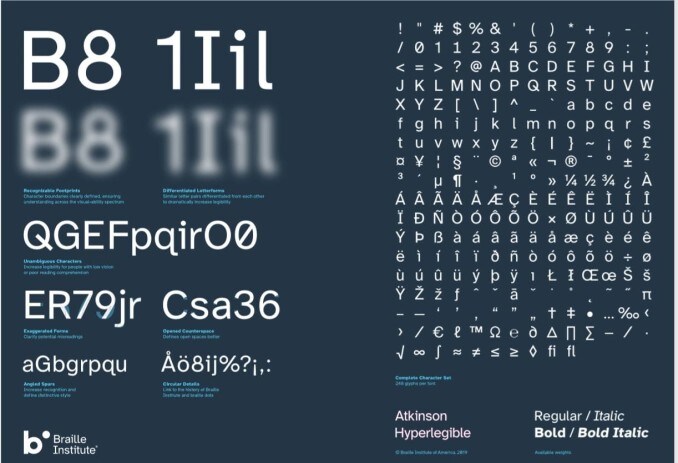Definition Of "Visually Impaired"
The U.S. Centers for Disease Control and Prevention (CDC) defines visual impairment as the condition when "a person's eyesight cannot be corrected to a 'normal' level."
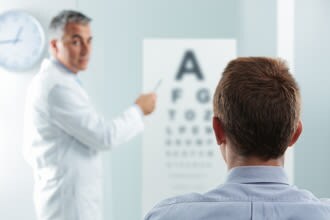
Resources for the visually impaired include modified eye exams performed by a low vision specialist.
According to CDC, vision impairment may be due to a loss of visual acuity, where the eye does not see objects as clearly as usual, or a loss of visual field, where the eye has a diminished field of view (reduced peripheral vision).
When caused by reduced visual acuity (VA), CDC defines visual impairment as "having VA of 20/40 or less."
In the U.S., most states require drivers to have 20/40 vision or better. So a person classified as visually impaired may or may not be eligible for a driver's license, depending on the state he or she lives in.
Where To Start
A number of federally mandated benefits are available to people who are visually impaired or legally blind. For example, you may get a tax break, and you may qualify for special benefits through the Social Security Administration. (See "Social Security Disability Benefits for the Legally Blind.") Also, most states and counties offer educational, employment, financial and health and welfare services to individuals with visual disabilities.
While these programs offer essential financial and medical support, other programs and services that address functional needs and help you enjoy your day-to-day life are just as important.
If your eye doctor determines that you're visually impaired — even if you're not legally blind — you will likely be referred to a low vision specialist who can help you identify your specific functional needs and navigate the services that are available in your community.
Adjusting To And Living With Vision Impairment
One of the biggest obstacles for visually impaired individuals is the emotional one. Adjusting to vision loss is difficult and takes time. Many people find that a counselor or support group can help them learn to accept their vision loss so they can move forward toward a richer life. A key element in this often involves developing the skills needed to live independently despite visual impairment.
In most cases, people with even severe vision loss can continue to live independently. In fact, even people who are totally blind can prepare meals, clean their homes, groom themselves, pick out their own clothes, manage their households and pay their own bills. These tasks may require some training, but a visually impaired person usually can perform them successfully.
While visual impairment doesn't have to hold you back, there will be some tasks that you may need to assign to others. Driving may be one such activity. Fortunately, many communities offer transportation services for the visually impaired.
READ MORE: Anchor Center for Blind Children
Low Vision Doctors And Organizations
Low vision doctors specialize in helping patients retain their independence by prescribing special visual aids that make it easier to perform many activities that a normally sighted person can perform. These low vision devices help make the best use of the remaining vision you have, and include magnifiers, glasses, telescopes and electronic devices.
Other options for reading might include large print materials, audio books and braille. There also are apps for phones and tablet computers that can help you read more easily if you are visually impaired.
Here is a partial list of organizations that provide information and services for the visually impaired, people with low vision and the blind:
Envision is a national nonprofit organization whose mission is to improve the quality of life and provide inspiration for the blind and visually impaired through employment, outreach, rehabilitation, education and research. Envision also promotes advocacy and independence for those who are blind or partially sighted. Founded in 1933 in Wichita, Kansas, Envision is one of the largest employers of individuals with vision loss in the nation. You can learn more about Envision at www.envisionus.com .
The National Library Service (NLS) for the Blind and Physically Handicapped is one of the largest resources for adapting printed material for use by people who are visually impaired or blind. Through a national network of cooperating libraries, NLS administers a free library program of braille and audio materials to eligible borrowers in the United States via postage-free mail. Learn more at www.loc.gov/nls/.
The American Council of the Blind (ACB) is one of the nation's largest membership organizations for the blind and visually impaired. ACB has affiliate offices in nearly every state and in the District of Columbia. Learn more at www.acb.org/state-affiliates.
The National Federation of the Blind (NFB) is an advocacy and service group for the blind and visually impaired that has more than 50,000 members. NFB has offices in every state and has local chapters in many communities. Learn more at www.nfb.org.
VisionAware is a free, easy-to-use website sponsored by the American Foundation for the Blind (AFB) and Reader's Digest Partners for Sight Foundation. It offers a robust state-by-state directory of services for the visually impaired. Learn more at www.visionaware.org.
Apps For The Visually Impaired And Blind
These days, there's an app for just about everything. In fact, a number of innovative companies have developed very useful mobile device applications for people who are visually impaired or blind.
You can download them from iTunes (for iOS devices) or Google Play (for Android devices). Here's a partial list:
KNFB Reader. This app enables a visually impaired person to take a photo of any printed document — including mail, receipts, memos and many other documents — and the phone will read it aloud.
TapTapSee. This app utilizes the mobile device's camera and voiceover functions to photograph objects and identify them out loud for the user.
VizWiz. This app allows visually impaired and blind individuals to receive quick answers to questions about their surroundings. VizWiz users take a picture with their phone, ask a question, and then receive spoken answers from people recruited from their social network or from anonymous web workers.
LookTel Money Reader. This app allows blind and visually impaired individuals to know the value of the paper money they are holding. The app recognizes the bills and immediately speaks the denomination, enabling users to quickly identify and count their cash.
SEE RELATED: How to make the internet easier to navigate with impaired vision
Ask Your Eye Doctor
For expert low vision care and additional services for the visually impaired in your local area, ask your optometrist or ophthalmologist for a referral to a low vision specialist and more recommendations.
READ NEXT: Vision and Eye Health Awareness Calendar







